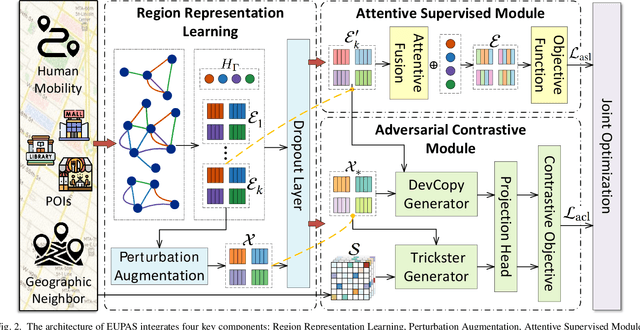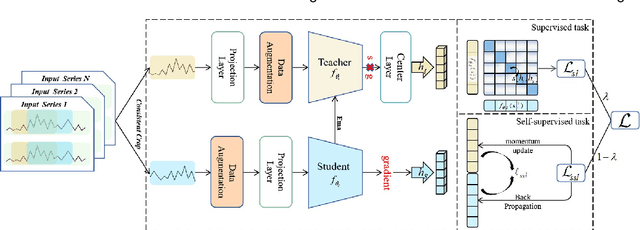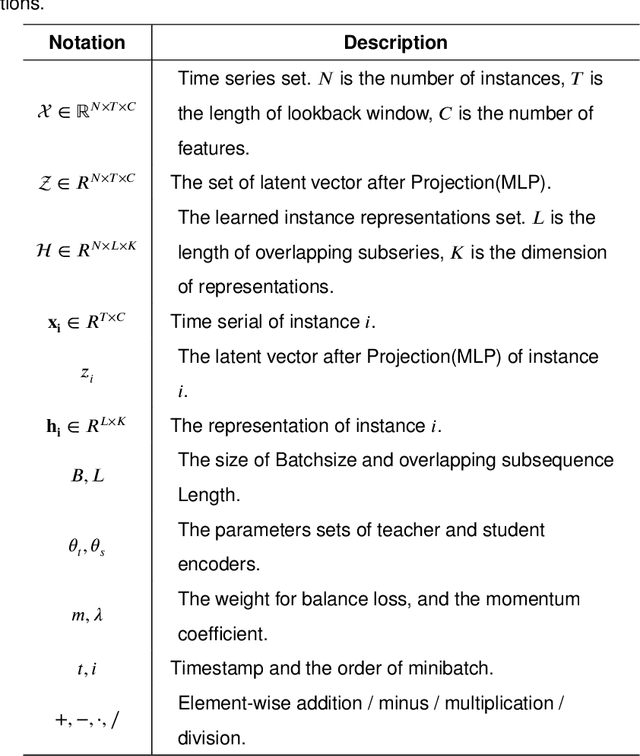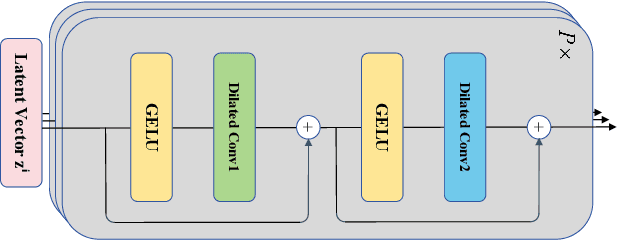Jinbao Li
Enhanced Urban Region Profiling with Adversarial Self-Supervised Learning
Feb 02, 2024



Abstract:Urban region profiling is pivotal for smart cities, but mining fine-grained semantics from noisy and incomplete urban data remains challenging. In response, we propose a novel self-supervised graph collaborative filtering model for urban region embedding called EUPAS. Specifically, region heterogeneous graphs containing human mobility data, point of interests (POIs) information, and geographic neighborhood details for each region are fed into the model, which generates region embeddings that preserve intra-region and inter-region dependencies through GCNs and multi-head attention. Meanwhile, we introduce spatial perturbation augmentation to generate positive samples that are semantically similar and spatially close to the anchor, preparing for subsequent contrastive learning. Furthermore, adversarial training is employed to construct an effective pretext task by generating strong positive pairs and mining hard negative pairs for the region embeddings. Finally, we jointly optimize supervised and self-supervised learning to encourage the model to capture the high-level semantics of region embeddings while ignoring the noisy and unimportant details. Extensive experiments on real-world datasets demonstrate the superiority of our model over state-of-the-art methods.
Distillation Enhanced Time Series Forecasting Network with Momentum Contrastive Learning
Jan 31, 2024



Abstract:Contrastive representation learning is crucial in time series analysis as it alleviates the issue of data noise and incompleteness as well as sparsity of supervision signal. However, existing constrastive learning frameworks usually focus on intral-temporal features, which fails to fully exploit the intricate nature of time series data. To address this issue, we propose DE-TSMCL, an innovative distillation enhanced framework for long sequence time series forecasting. Specifically, we design a learnable data augmentation mechanism which adaptively learns whether to mask a timestamp to obtain optimized sub-sequences. Then, we propose a contrastive learning task with momentum update to explore inter-sample and intra-temporal correlations of time series to learn the underlying structure feature on the unlabeled time series. Meanwhile, we design a supervised task to learn more robust representations and facilitate the contrastive learning process. Finally, we jointly optimize the above two tasks. By developing model loss from multiple tasks, we can learn effective representations for downstream forecasting task. Extensive experiments, in comparison with state-of-the-arts, well demonstrate the effectiveness of DE-TSMCL, where the maximum improvement can reach to 27.3%.
MEAOD: Model Extraction Attack against Object Detectors
Dec 22, 2023Abstract:The widespread use of deep learning technology across various industries has made deep neural network models highly valuable and, as a result, attractive targets for potential attackers. Model extraction attacks, particularly query-based model extraction attacks, allow attackers to replicate a substitute model with comparable functionality to the victim model and present a significant threat to the confidentiality and security of MLaaS platforms. While many studies have explored threats of model extraction attacks against classification models in recent years, object detection models, which are more frequently used in real-world scenarios, have received less attention. In this paper, we investigate the challenges and feasibility of query-based model extraction attacks against object detection models and propose an effective attack method called MEAOD. It selects samples from the attacker-possessed dataset to construct an efficient query dataset using active learning and enhances the categories with insufficient objects. We additionally improve the extraction effectiveness by updating the annotations of the query dataset. According to our gray-box and black-box scenarios experiments, we achieve an extraction performance of over 70% under the given condition of a 10k query budget.
Sharp Eyes: A Salient Object Detector Working The Same Way as Human Visual Characteristics
Jan 18, 2023



Abstract:Current methods aggregate multi-level features or introduce edge and skeleton to get more refined saliency maps. However, little attention is paid to how to obtain the complete salient object in cluttered background, where the targets are usually similar in color and texture to the background. To handle this complex scene, we propose a sharp eyes network (SENet) that first seperates the object from scene, and then finely segments it, which is in line with human visual characteristics, i.e., to look first and then focus. Different from previous methods which directly integrate edge or skeleton to supplement the defects of objects, the proposed method aims to utilize the expanded objects to guide the network obtain complete prediction. Specifically, SENet mainly consists of target separation (TS) brach and object segmentation (OS) branch trained by minimizing a new hierarchical difference aware (HDA) loss. In the TS branch, we construct a fractal structure to produce saliency features with expanded boundary via the supervision of expanded ground truth, which can enlarge the detail difference between foreground and background. In the OS branch, we first aggregate multi-level features to adaptively select complementary components, and then feed the saliency features with expanded boundary into aggregated features to guide the network obtain complete prediction. Moreover, we propose the HDA loss to further improve the structural integrity and local details of the salient objects, which assigns weight to each pixel according to its distance from the boundary hierarchically. Hard pixels with similar appearance in border region will be given more attention hierarchically to emphasize their importance in completeness prediction. Comprehensive experimental results on five datasets demonstrate that the proposed approach outperforms the state-of-the-art methods both quantitatively and qualitatively.
 Add to Chrome
Add to Chrome Add to Firefox
Add to Firefox Add to Edge
Add to Edge